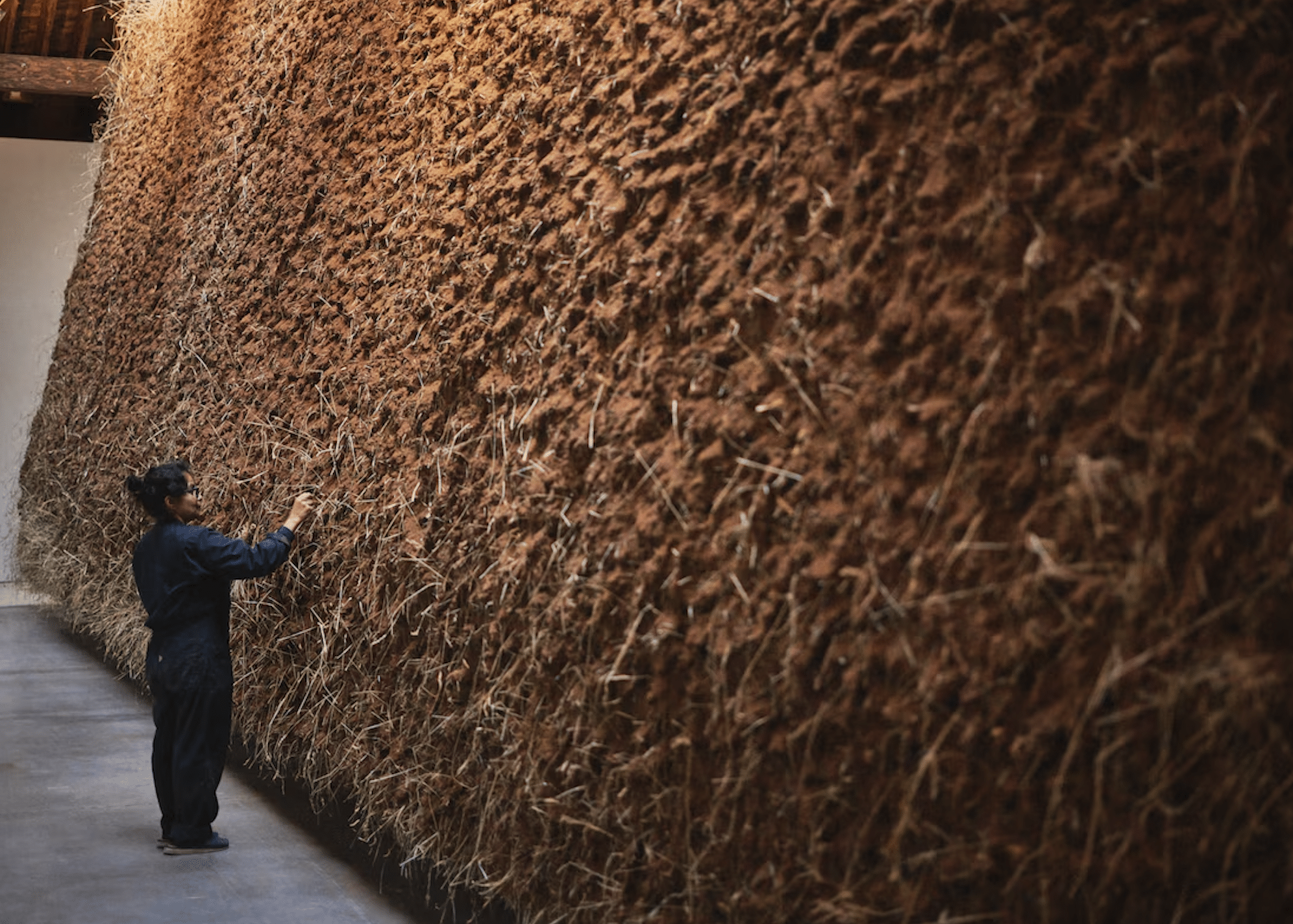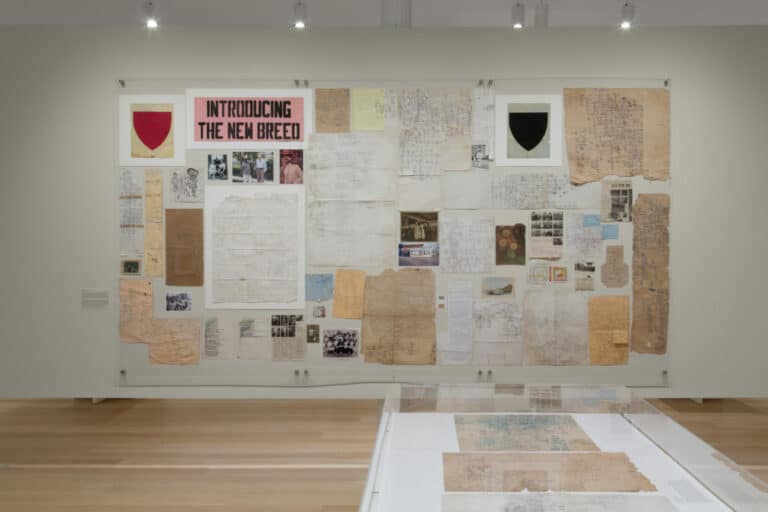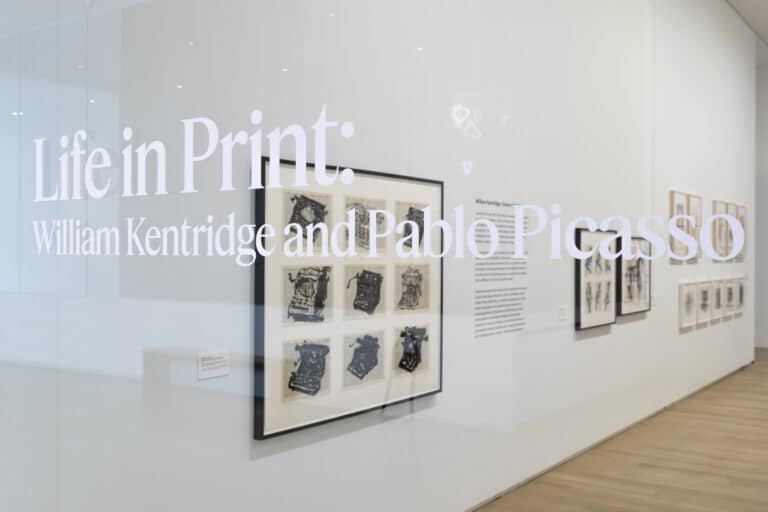Morelos’ El abrazo (The Embrace) is by no means a new installation at the Dia Chelsea. Its expansive mass has taken root in the gallery for nearly a year, and last month, I was finally able to have my first encounter with the work.
Embracing ancestral land
I am grateful to have been able to experience Morelos’ exhibition in all its glory on its closing days. El abrazo can be best described as an enormous, ziggurat-esque structure. Its walls, which hover a foot above the ground, incline gently towards a large skylight. Composed of soil, clay, and coir (coconut husk fibers) blended with spices like cinnamon and clove, the walls emit a rich, cakey aroma.
The installation’s scale gives it a massive and inexorable presence, yet the aroma of spices and the delicacy of the straw evoke a sense of fragility and ephemerality. Against the rigid, towering, and imposing urban landscape of Manhattan, Morelos’s earthy, biological intervention provides an unexpected but much-welcomed dose of salvation.
The intimate humidity of the earth
With all of this in mind, it would be futile to limit the work to purely visual means. One can only truly take in Morelos’ architectural creation by engaging with its physicality using one’s own. The walls of El abrazo invite touch; leaning into its subtle slope and applying pressure with your hands, you can feel its friable texture and sharp ridges. The installation’s scale and tactile quality create an experience that feels both massive and delicate, offering a sensory connection that is profoundly grounding and invigorating.
Within these corridors, the earth envelops my body, sealing me off from the outside world and its distractions using its all-consuming expanse. Fragments of it still cling to my fingernails and the tempo of my steadying heartbeat as I write.
Perhaps Morelos puts it best: “There is no gravity, and the moment there is no gravity, earth is sacred.”



